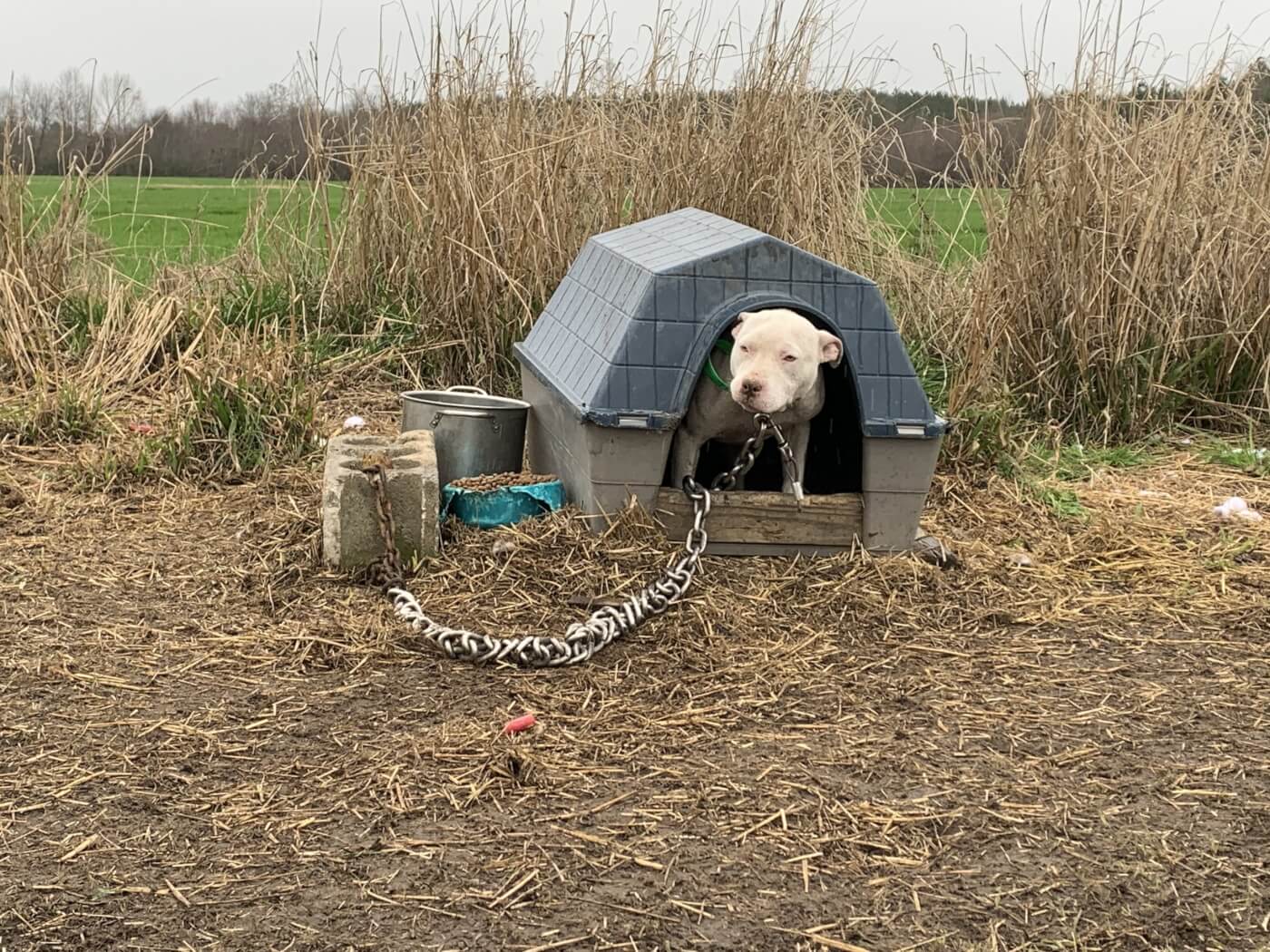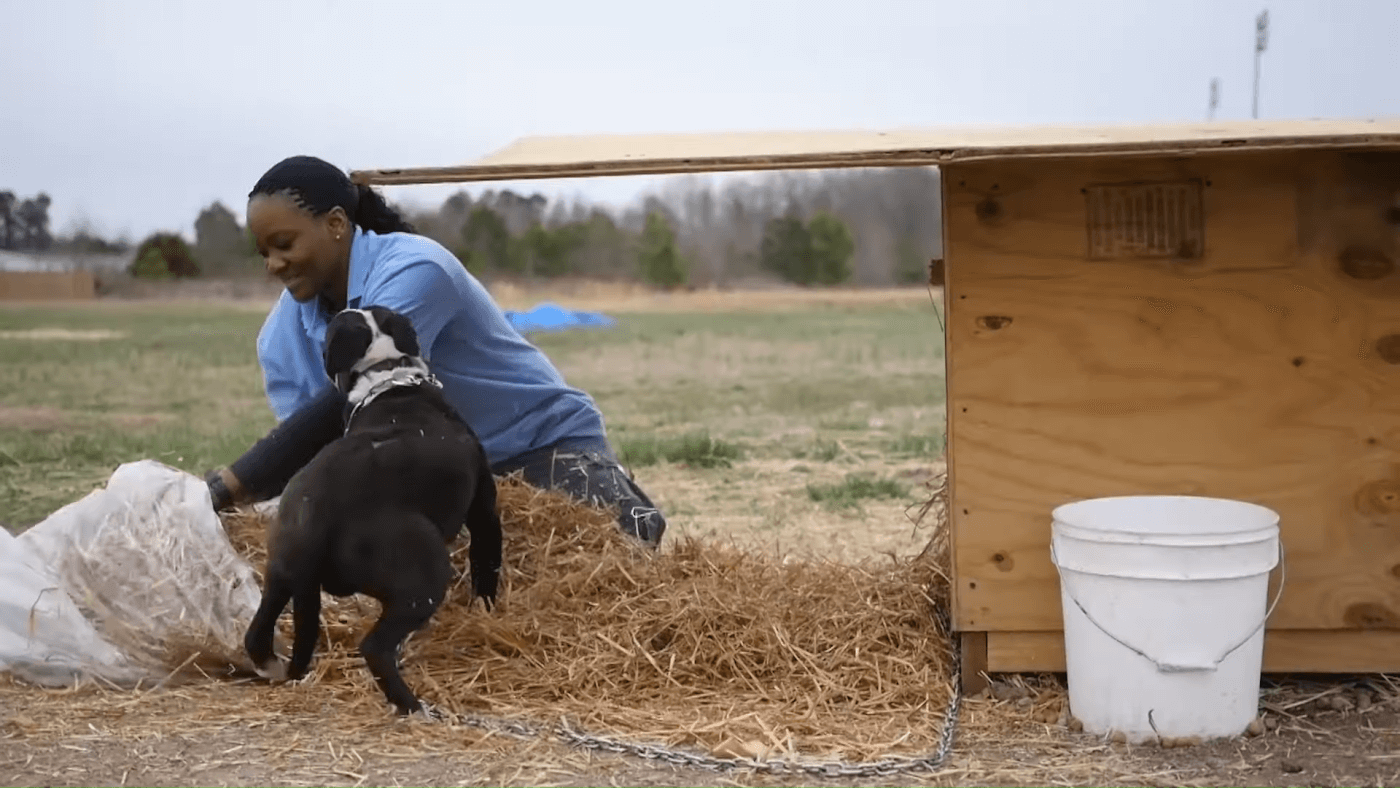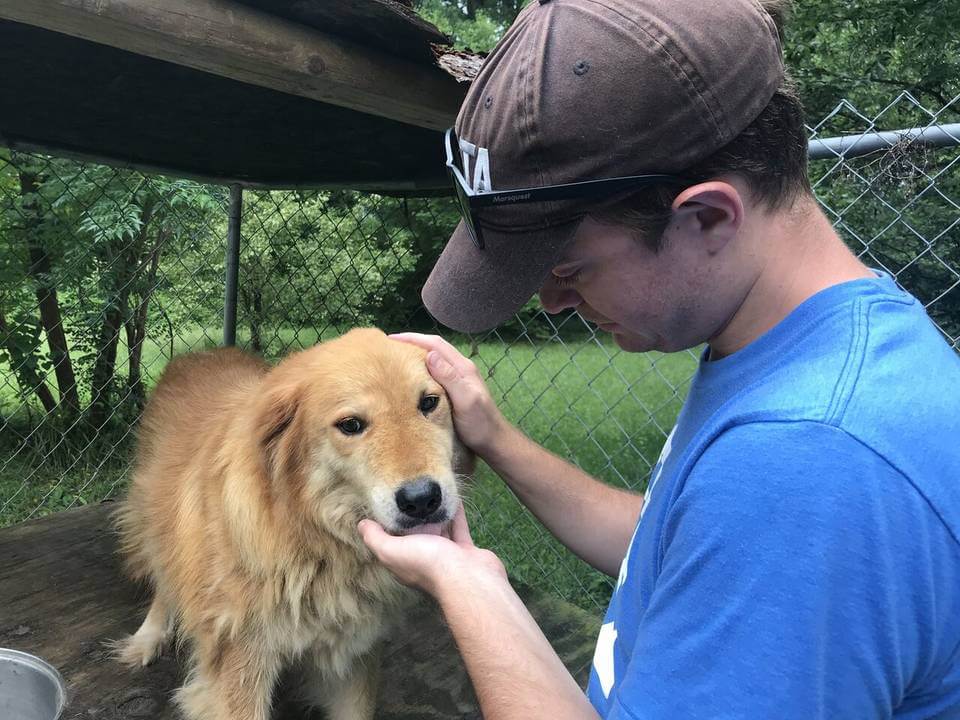9 Eye-Opening Takeaways From ‘Breaking the Chain’
If you’re as much of a sucker for tearjerkers as I am, you won’t want to miss Breaking the Chain, the new documentary from executive producer Anjelica Huston about PETA’s Animal Rescue Team and its work to help companion animals in impoverished and underserved areas of Virginia and North Carolina. This film doesn’t just tug at heartstrings, though. It also opens eyes to the suffering endured by animals trapped in desperate situations, the challenges faced by PETA’s fieldworkers as they do everything they can to help them, and the ways everyone can make a difference for cats and dogs in their own community. Don’t miss out: You can watch the film on Prime Video.
Here are nine eye-opening takeaways from Breaking the Chain:
1. Keeping dogs chained or penned outside 24/7 is status quo in some areas.
In many rural areas PETA serves, keeping “man’s best friend” chained or penned up outdoors like an old bicycle is—sadly—the norm. Many dogs are kept outside 24/7 with little or no shelter, even in rain, snow, heat, or cold, confined to muddy pens or tethered by chains that weigh nearly as much as they do. In one alarming scene in the film, a PETA fieldworker places a chain removed from a small puppy on a scale. Its weight? Thirty pounds. Our fieldworkers kindly and respectfully help people understand that dogs aren’t status symbols or security systems—they’re family members who want and deserve to live indoors. When owners won’t let them indoors, our fieldworkers do everything possible to make them less lonely and uncomfortable.

2. PETA builds relationships within the community.
Even when it comes to something as simple as trimming their animals’ nails or grooming them to remove matted hair, many of the people in the area PETA serves lack the resources to care for their animals properly—or simply don’t know how. When our fieldworkers come to help, residents are immensely grateful and often give what they can—whether it’s a couple of dollars, a heartfelt thank-you note, or even fresh veggies from their garden. Seeing PETA’s fieldworkers display such kindness and sensitivity when engaging with people in the community can inspire viewers to implement an empathetic approach to animal advocacy in their own lives.


3. A doghouse can change—and save—a life.
Thanks to donors’ generosity, fieldworkers are able to deliver custom-built doghouses for dogs with inadequate shelter (or sometimes no shelter at all), free of charge. The only thing that they ask in exchange is for the families to allow PETA to spay or neuter their animals, also at no cost. Seeing the tail-wagging joy of dogs receiving their first sturdy, dry shelter brought tears to my eyes.

4. Animals are not “voiceless,” and we should listen to them.
There’s a misconception that animal rights advocates are the ones giving animals a voice. Breaking the Chain makes it clear that animals do have a voice, but their cries for help are often disregarded. Chained, neglected dogs cry out for love, companionship, and basic necessities (like food, water, and shelter) in so many ways: barking until they’re hoarse, straining at chains, pacing endlessly, and even chewing on their doghouses in desperation. They communicate happiness and gratitude just as clearly, by jumping for joy and wagging their tails (and often their whole bodies!) when PETA’s fieldworkers visit and bring them food, clean water, fresh straw to insulate their doghouses, and, of course, affection. Each scene in which fieldworkers communicate with these animals is a reminder of the importance of listening and observing when caring for one.
5. Persistence pays off.
PETA’s fieldworkers routinely encounter some of the worst cruelty imaginable. In one heartbreaking scene, they visit a tethered dog to bring food, water, and toys—but as they play with the appreciative gal, they find the body of a dead and decomposed dog just a few feet away. This shows the emotional toll that this kind of work can take. Even when confronted with devastating events, though, PETA’s fieldworkers immediately get to work to ensure that other animals on the property don’t endure the same fate. Sometimes, it takes years to persuade people to bring their animal companions indoors, have them sterilized, or surrender them for a chance at a happy life in a loving home (or if it’s too late for that, a peaceful exit). As you’ll see in stories of dogs like Edith, our fieldworkers never stop trying.
6. Simple gestures can go a long way.
For dogs who spend all day every day alone on a chain—with nothing to do, nothing new to see or sniff, and often no companionship whatsoever—a kind word, a gentle touch, or a few minutes of playtime means the world. It’s no wonder that their tails start wagging the minute they see their friends from PETA approaching! Some animals, like a timid dog named Zena, have been neglected for so long that it’s difficult for them to trust anyone. Our fieldworkers work to earn their trust with heaping bowls of food, tasty treats, toys, and lots of patience. For some dogs, a PETA fieldworker may be the first—and only—human ever to show them kindness. Moments like these in Breaking the Chain demonstrate how important all aspects of our work are, even those that sometimes go unnoticed.

7. “No-kill” policies offer no help to the animals who need it most.
“No-kill” policies in shelters don’t end animal suffering. Many facilities with such policies only take in animals they deem “adoptable” and turn away the rest, leaving them to struggle to survive on the streets or with people who don’t want them (and may abandon or neglect them). PETA operates differently: We transfer most adoptable animals to local placement partners or find wonderful, loving homes for them. We never turn away any animal, including those whose guardians bring them in because they can’t afford euthanasia at a veterinary clinic. Breaking the Chain shows one of those people and his beloved companion, in a moving scene that demonstrates why our services are so vital. PETA focuses on stopping the overpopulation crisis at its source, through spaying and neutering. We’re ending companion animal homelessness and neglect the right way—by focusing on prevention and a “no-birth” goal. Seeing all the ways PETA works to address overpopulation in shelters will make viewers realize how widespread this issue really is and how efforts to give animals hope are often misunderstood.
8. A fieldworker’s day is never predictable.
Fieldworkers sometimes find dogs with their ears bitten bloody by flies or their neck rubbed raw by a too-tight collar. One scene shows a fieldworker finding an entire litter of sickly kittens abandoned by their mother in a tangle of brush, their eyes sealed shut from infection. There are many victories and tribulations in Breaking the Chain that you might not expect to see, and people curious about this line of work will likely be surprised to learn about the unique challenges each day presents.
9. Never be silent.
Animal neglect and abuse exist in every community, but PETA’s fieldworkers can’t be everywhere at once. And that’s where community members come in! Everyone can be a lifeline for animals in their own area by staying alert to signs of cruelty and always reporting known or suspected neglect or abuse to police immediately. If authorities are unresponsive, contact PETA.
*****
What will you take away from Breaking the Chain? Watch it now on Apple TV, iTunes, Prime Video, Google Play, Vimeo, or Vudu and find out!
PETA is a participant in the Amazon Services LLC Associates Program, an affiliate advertising program designed to provide websites with a means to earn advertising fees by advertising and linking to Amazon.com.

